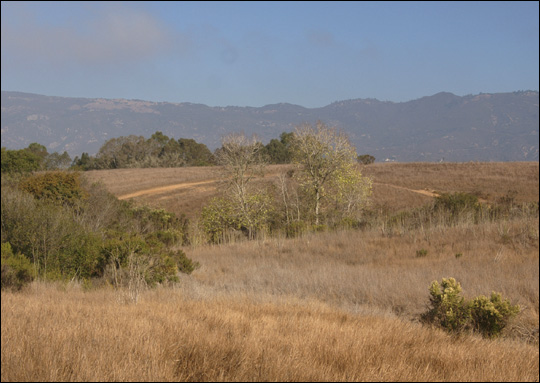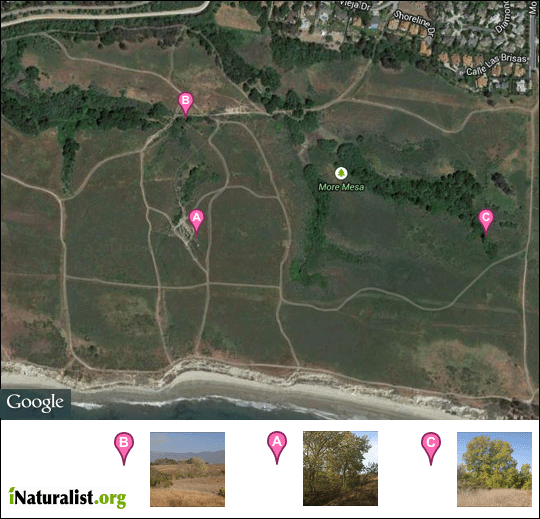It’s Fall …
Folks who don’t live in our beautiful Santa Barbara area often make a big issue of the fact that they love the changing seasons, and note that we don’t have them here. We all know we do, but the changes are subtle and you have look more closely to be aware of them. For example, one of the family of our native trees, one much less represented on More Mesa, is the Black Cottonwood. And although they are relatively rare in the Goleta Valley, More Mesa can boast of three separate groves of Black Cottonwoods.
The most visible grove, on the east side, just south of the Cypress trees, has three very tall (65-70 feet), readily observable and spectacular examples of these deciduous trees. And if you look at the area surrounding these giants, you will see that there are also a sizeable number of younger trees, creating a delightful Cottonwood grove. A second grove with smaller, less noticeable trees is in one of the drainages in the middle of More Mesa and the third, very small grove is just west of the railroad cut.
Now, in autumn, the round distinctive leaves of the Cottonwoods are turning yellow and beginning to drop. The trees will be bare throughout winter, with leaves reappearing again in late February or early March … our spring. Moreover, these seasonal changes (phenology) of cottonwoods on More Mesa are now being monitored and reported to Budburst. There are indeed seasons on More Mesa!
On More Mesa, cottonwoods provide habitat for many creatures including Nuttall’s Woodpecker. This woodpecker eats cottonwood buds in the spring. and also nests in self-excavated cavities in cottonwoods, as well as in other native trees on More Mesa.

